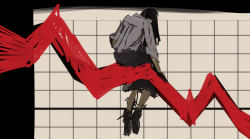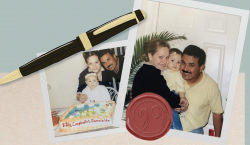I stepped out of the bus into cold rain in Chinatown, New York City at 11 p.m. Friday night. It had already been a long night—six hours on a bus that had more rows of seats crammed into it than it was supposed to. All I wanted to do was get on the Q train, sit down in a place where I could move my legs, walk the six blocks to my row house in Brooklyn and get some sleep. Instead, I was greeted by honking horns, jack-hammers, dirt and rain.
I was also met with something far less expected and even more unwelcome. As I walked down the stairs at the Canal Street subway station, I caught a glimpse of camouflage uniforms. It could have been kids dressed in military surplus clothes. It wasn’t. Three members of the United States National Guard were at the bottom of the stairs. Within half an hour, I had seen five more.
Once again, as after Sept. 11, 2001, there were military men in my city. I saw their automatic rifles and was overcome by a feeling of helplessness and fear. I was, once again, under attack. My senses were flooded with memories that I will never forget—the smell of lower Manhattan in early October; a military Hummer parked on West Street; screaming as lights flickered in the hallway of my school; the taste of the air that clung to our bodies and wouldn’t let go; a picture of a Hasidic Jew next to a man in the uniform of the Israeli Army, both standing at phone booths in downtown Jerusalem.
The memory of the picture was easily the most eerie. Everything else was something I have lived through, thought about and coped with. I like to think that I have moved on. I do not prep myself to use alternate subway routes, nor do I consider discontinuing my use of public transportation. I do not have a “disaster supply kit,” and it never occurred to me to carry a damp cloth in my bag, in case of a gas attack. I was not prepared to see the National Guard alongside civilians in a place as familiar for me as a phone booth: a subway station. I never imagined that I would be expected to dwell in the kind of fear that keeps the Army patrolling the streets of Jerusalem. I live in the invincible United States of America.
Many people claimed after Sept. 11 that the terrorists would not win because we would not let them; we would not live in fear. If that is what it takes to win, we are many battles behind. Suicide bombers and plane hijackers are beyond fear. Death is their express train to heaven. Meanwhile, our fear has convinced us that guns in public places are safe, while risking an attack from people on the other side of the world is not. We hear buzz words like “weapons of mass destruction,” without knowing who has them, and “evil doers,” without knowing who they are. We believe that these people with their weapons are coming to get us. Many fear that our guns cannot protect us from an attack. We have no idea when it is coming, how it will come, or if it will ever reach us.
Israelis in Jerusalem live in a similar fear. They do not know when the next suicide bomber will attack or where the next explosion will occur. In their case, though, suicide bombers are a regular threat. There is no one incidence to spark their fear; they are afraid of the continued repetition of the same act of terrorism. It is only scarier because the extremists are willing to give their lives in order to take the lives of others, and they can do it anywhere, throwing any neighborhood into disarray.
In our attempt to make ours an orderly fear, we have color-coded our perceived danger. Every time we reach a hue closer to red we have all agreed to get a little more scared. For all our talk about winning the “War on Terrorism,” many of us remain terrified.
The cause for the soldiers, who occupy New York’s more busy subway stations at night, is the ominous “Code Orange.” What was once the color of a fruit, Creamsicles, the sunset, the street lamps outside my window and the Mets logo has become the color of a nation’s fear. The rainbow we once hoped to see after it rained has become a warning sign. If I were to color-code our threats, it would be in the greens and browns of a camouflage uniform. Rainbows do not kill people-weapons in the hands of the military do. We are in more danger than we were-“Code Olive Green”—because the closer we are to attacking, the closer we are to feeling the retaliation of those we have attacked. “Code Orange” is not an indication of the danger we are in. It is an indication of the danger war puts everyone in.
Safety does not come from automatic rifles in the subways. I am more afraid of our own soldiers than “evil-doers” on the other side of the world. Terrorist guns are not in my city, my home. Their automatic triggers do not threaten to go off by mistake and kill my family. I want the Army out of the subways. I do not live in Jerusalem. I will not live in their fear.
Liz O’Callahan is a first-year in the College. She screams, “Not in my name!”




